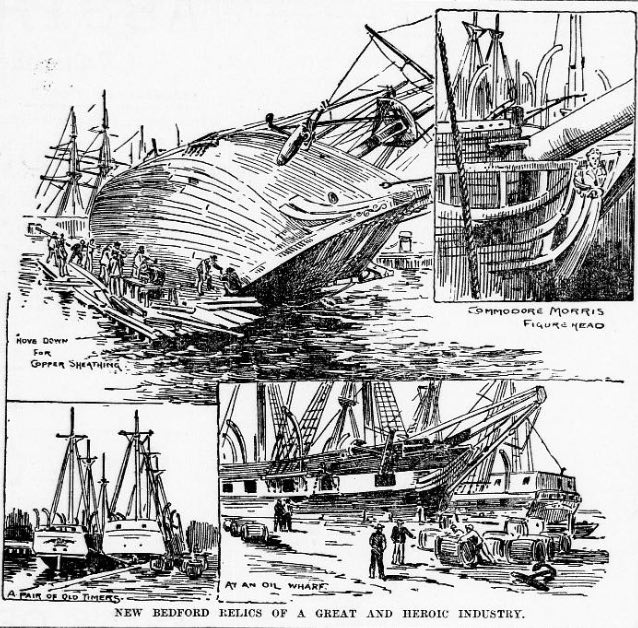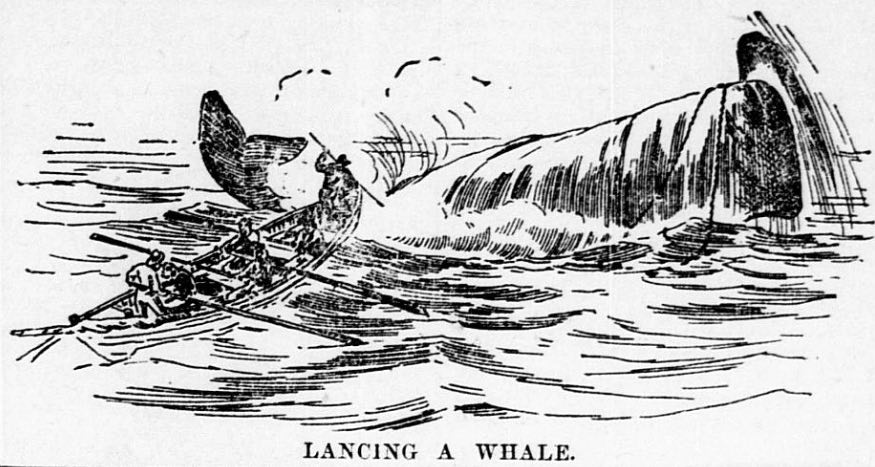
On August 12, 1819, the whale ship Essex left port in Nantucket, Massachusetts with plans to hunt down whales for their valuable oil, but the ship was doomed from the very start. The crew, a total of twenty-one men, was inexperienced and the captain, George Pollard Jr., was a mere twenty-eight years old and a first time captain. This, combined with the hostile environment of the open sea, led to one of the greatest of maritime horrors that influenced the writing of Moby Dick by Herman Melville. [1]

Grisly Cure For Sea Sickness
With so many green hands on board, including one as young as fourteen-years-old, it was no surprise that some of the men experienced sea sickness. Of course, whaling was a business and there was no time to pamper these new men of the sea. Instead, they were given the tough love treatment and a common, but fairly gross, remedy for sea sickness.
The common treatment used for curing sea sickness during this time was used on the Essex. It involved tying a string around a piece of pork fat. The sick person would hold the end of the string, swallow the pork fat, and pull it back out.
Whether or not this so called remedy helped with the sea sickness, the men had to continue working, and retching, through the assignments given to them for their shift. [2]
First Whale Attack
Heading into the Pacific in October 1819, the Essex sailed into the midst of a large group of sperm whales. The men, happy at the sight, got onto the small whale boats and headed out with their harpoons.
It was going to be an easy harvest until a whale swam under one of the boats and slammed its tail straight up into the boat’s underside. The men were sent flying into the air and their small boat was broken into mere shards.
In the water, the men scrambled for parts of the shattered boat to hold onto, keeping their heads above the water until the other men could rescue them. Fortunately, no lives were lost, but the event was certainly an omen of what was to come. [3]

The Burning Of Charles Island
On their journey, the Essex made a stop at Charles Island. The men were sent onto the island to collect tortoises and they were extremely successful. They captured a total of 60 large, 100-pound tortoises and brought them on board the ship.
While some of the men were sent back to the island to search for more tortoises, one of the men, the ship’s prankster, decided to set fire to the underbrush on the island. It was the dry season and it did not take long for the fire to spread.
The men on the island had to run through the fire’s blaze to escape the inferno and return to the ship. While no man was killed by this senseless prank, the fire lit up the entire island and killed off countless tortoises, birds, and other wildlife. It was the tragedy that drove the Floreana Tortoise and Floreana Mockingbird to extinction. [ 4, 5]
Damage To The Essex
When the men left Nantucket, they knew they would be gone for roughly two and a half years. Things probably would have gone as desired, except the men met with their first major disaster on November 20, 1820.
The Essex had come upon a pod of sperm whales. Three small whaleboats were launched out to hunt the whales and while those men were gone, another sperm whale came up close to the Essex and was harpooned.
Naturally, the whale thrashed about and struggled, but because it was so close to the Essex that it managed to open a seam and caused the ship to take in water. The harpooned whale was cut loose before it could do any further damage and the men rushed to make repairs. [6]
Immense Whale Attacked The Essex
As the men scurried to fix their ship, out in the waters the largest whale in the pod, roughly 85 feet long and marked with scars, was becoming more and more aggravated by the human intrusion. The men noticed that the large whale was acting a bit strange, but never expected what happened next.
The whale, almost as long as the ship, began swimming hard and fast towards them. It rammed the ship with so much force that it left the men shocked and speechless.
The assault was not over, though. The whale turned and charged at the ship again. This time the blow from the whale brought an end to the Essex and the ship could not be saved. [7]

Three Boats In The Ocean
Miraculously, none of the men were killed in the attack by the sperm whale. They did their best to collect whatever could be salvaged from the wreck and the men still had the three small whaling boats to get them home.
The newest problem facing these men was the fact that they were in the middle of nowhere. The closest place they could go to was the Marquesas Islands, roughly 1,100 miles away from where they were shipwrecked. Ironically, they decided against going to these islands for fear of cannibalism.
They decided, instead, to travel over 3,000 miles to South America’s coast with barely any provisions and zero hope for being rescued. [7]
Intestines And All
It did not take long before the men ran out of the few food provisions they had managed to get from the wreck. They did, however, rescue some of the tortoises they had taken from Charles Island.
Hungry and thirsty, the men decided to eat what was readily available to them. They killed the tortoises and drank the blood to quench their thirst. They ate the meat and were so hungry that they even ate the entrails.
Nothing went to waste and every edible part of the tortoises was quickly eaten. [7]
The Dead Get Eaten
Weeks passed on the sea. The men were starving, thirsty, and afraid. They had managed to find one island, Henderson Island, but it was barren and they could find nothing to eat.
Finally, in January, one of the crewmen began to hallucinate. After an outburst, the man collapsed and went into convulsions. He died shortly thereafter and the remaining men fell upon his body, taking the deceased apart, limb by limb. They cut the flesh off of his bones and they cut out his organs. The men gave the remaining carcass to the sea and roasted his organs on a flat stone to eat.
One by one, as each man perished, the remaining survivors would eat him. It was their only way to ensure their survival. [4]
Drawing Lots
More time passed and one of the boats vanished from sight. There were now only two boats left and eventually they, too, lost sight of each other.
The four men that were left on the Captain’s boat were beginning to worry about food once again. They were running out of their meat rations made from a previous shipmate.
One of the men suggested on February 6, 1821 that they draw lots to determine who would die in order for the rest to live. The matter was agreed upon and lots were drawn. The Captain’s own first cousin, Owen Coffin, drew the losing lot and another man drew the lot that determined he must kill the loser.
Owen set his head on the gunwale and accepted the fatal gunshot to the head. [4]
The Rescue
After eating Owen Coffin, one of the other three men had died. The Captain and one remaining survivor were crushing the man’s bones on the floor of their boat to get at the marrow when they were spotted by another ship, the Dauphin.
The last two men, it was said, were not happy about being rescued and were not in their right minds when they boarded the ship. They had grabbed the remaining bones of their shipmate from their little boat and sat on the rescue ship, sucking out the marrow.
They soon learned that ship they had lost sight of had already been rescued. Of the twenty-one men that left from Nantucket, only five survived the infamous Essex ordeal. [4]

